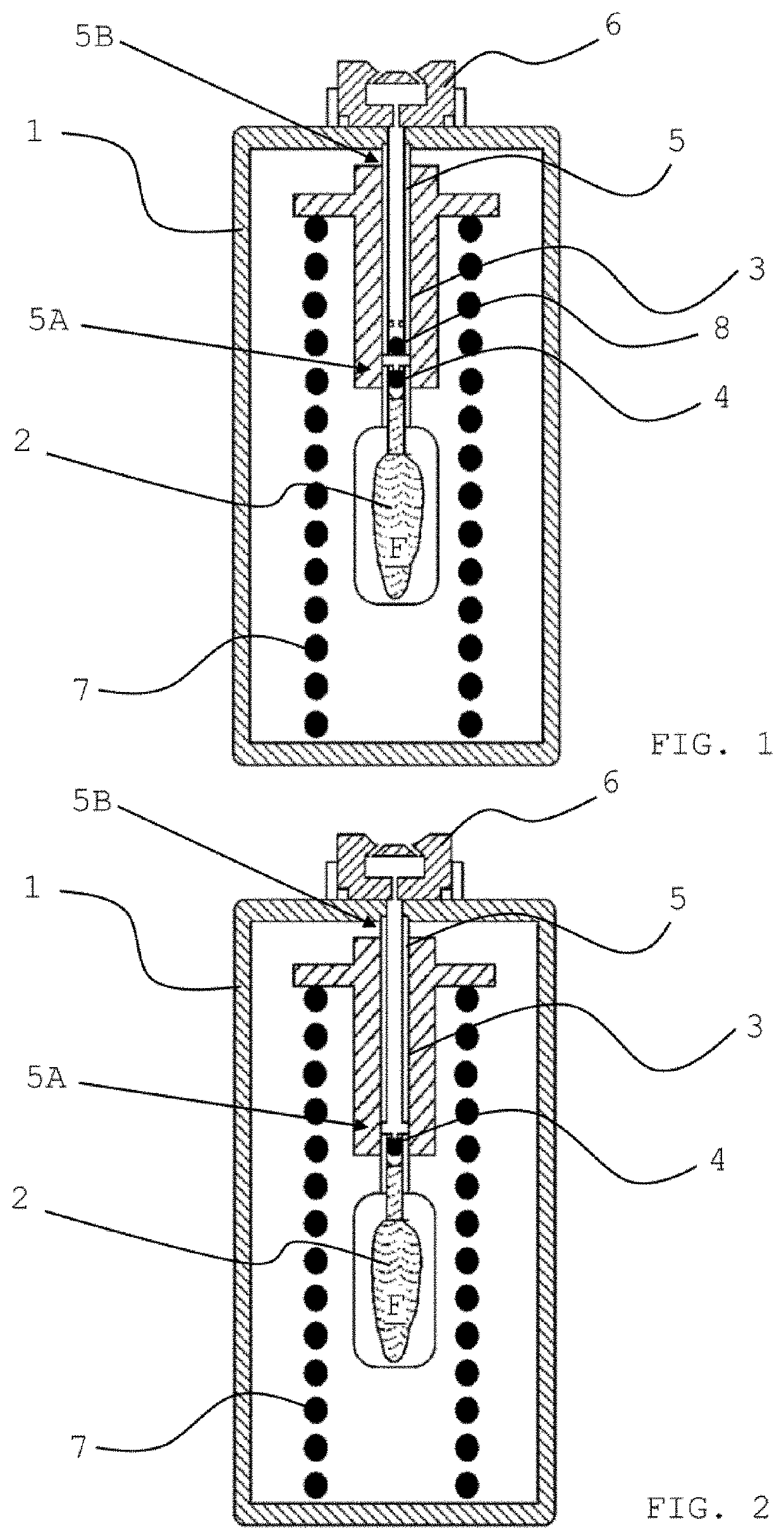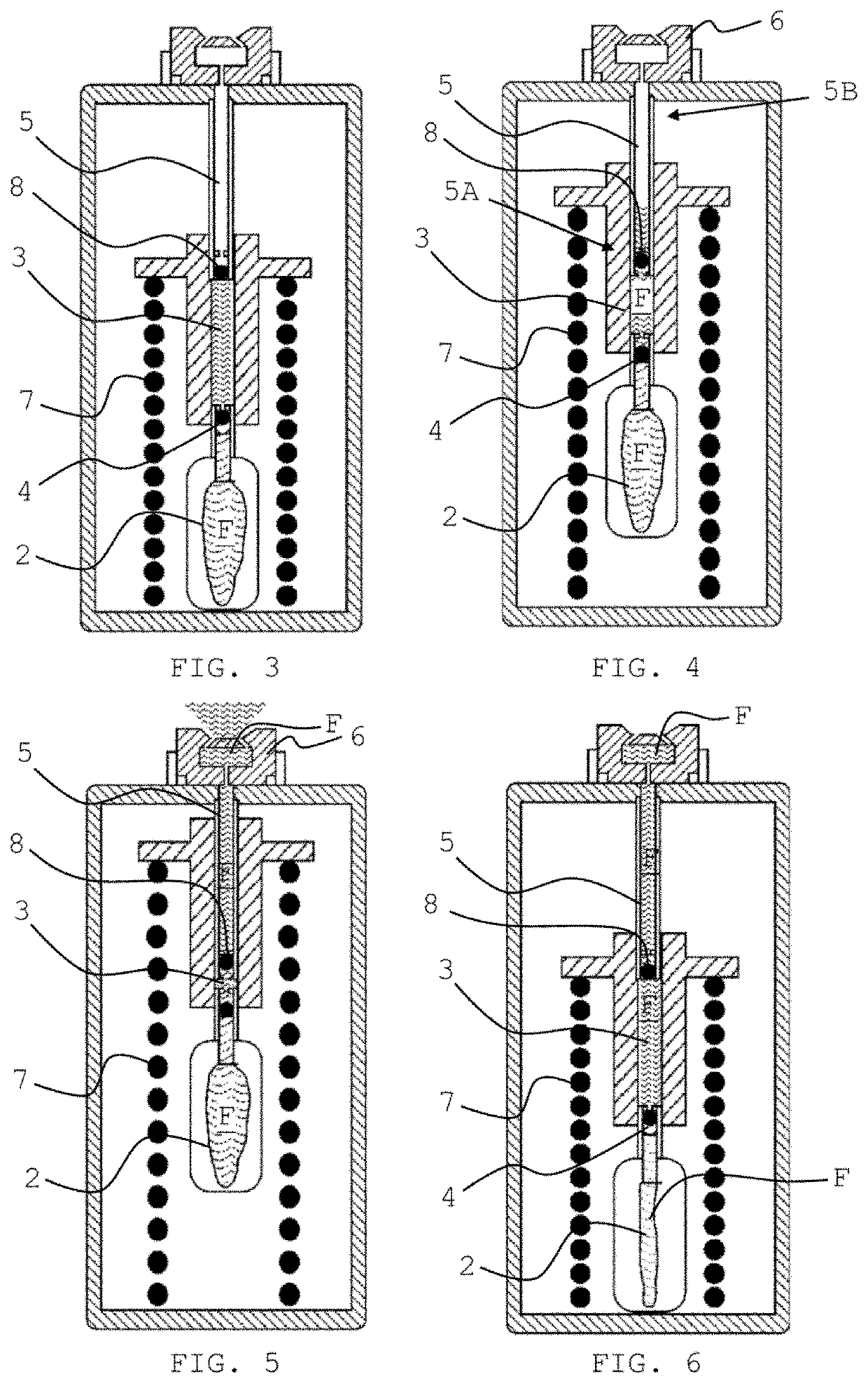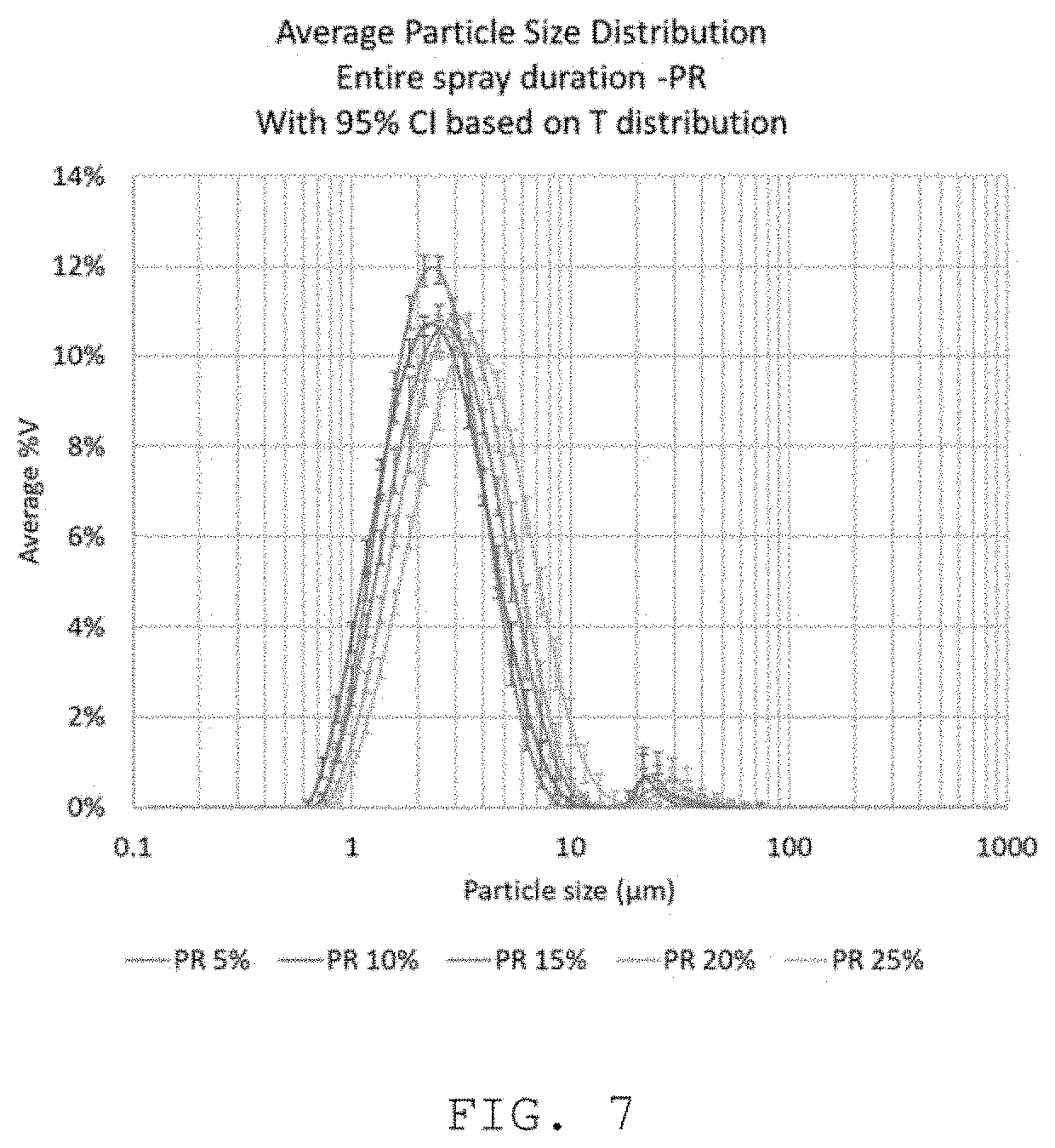Methods of treatment of viral diseases
- Summary
- Abstract
- Description
- Claims
- Application Information
AI Technical Summary
Benefits of technology
Problems solved by technology
Method used
Image
Examples
example 1
[0154]Solutions of water and ethylene glycol were prepared to mimic the viscosity of a high molecular weight compound such as remdesivir at concentrations of 5%, 10%, 15%, 20%, and 25% (wt. % of compound in solution). The wt / wt % values of ethylene glycol and water in each solution are summarized in Table 1.
[0155]
TABLE 1Dynamic Relative Water / EthyleneSampleViscosityDensityGlycol ratio (% w / w)PR 5%1.660.817490% H2O / 10% EGPR 10%1.930.826980% H2O / 20% EGPR 15%2.150.836475% H2O / 25% EGPR 20%2.470.845873% H2O / 27% EGPR 25%2.910.855170% H2O / 30% EG
[0156]Solutions were dispensed using an embodiment of a soft mist inhaler as disclosed herein at room temperature. The dispensing parameters and particle size distribution results are summarized in Table 2 and FIG. 7. The term “event duration” refers to entire spray duration in seconds (s) when the solution is dispensed.
[0157]
TABLE 2PR 5%PR 10%PR 15%PR 20%PR 25%MeanMeanMeanMeanMeanParameters(n = 6)Stdev(n = 6)Stdev(n = 6)Stdev(n = 6)Stdev(n = 6)Stde...
example 2
[0158]Solutions of remdesivir in ethanol (100%) and ethanol:water (70:30% w / w) were prepared at concentrations of approximately 3.56, 5.08, 7.63, and 10.17 mg ml. Solutions were dispensed using an embodiment of a soft mist inhaler as disclosed herein at room temperature. The dispensing parameters and particle size distribution results are summarized in Table 3 and FIG. 8. Addition of water increases the particle size.
[0159]
TABLE 3SpraydurationDv10Dv50Dv90EthanolFormulation(s)(μm)(μm)(μm)SpancontentREM 10.171.951.111.963.541.24100%REM 7.631.701.141.923.311.14100%REM 5.081.721.131.9 3.261.12100%REM 3.562.531.713.296.271.38 70%
PUM
| Property | Measurement | Unit |
|---|---|---|
| Concentration | aaaaa | aaaaa |
| Concentration | aaaaa | aaaaa |
| Volume | aaaaa | aaaaa |
Abstract
Description
Claims
Application Information
 Login to View More
Login to View More - R&D
- Intellectual Property
- Life Sciences
- Materials
- Tech Scout
- Unparalleled Data Quality
- Higher Quality Content
- 60% Fewer Hallucinations
Browse by: Latest US Patents, China's latest patents, Technical Efficacy Thesaurus, Application Domain, Technology Topic, Popular Technical Reports.
© 2025 PatSnap. All rights reserved.Legal|Privacy policy|Modern Slavery Act Transparency Statement|Sitemap|About US| Contact US: help@patsnap.com



